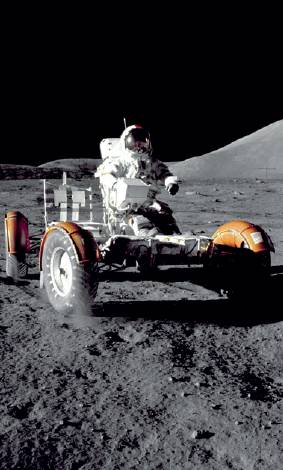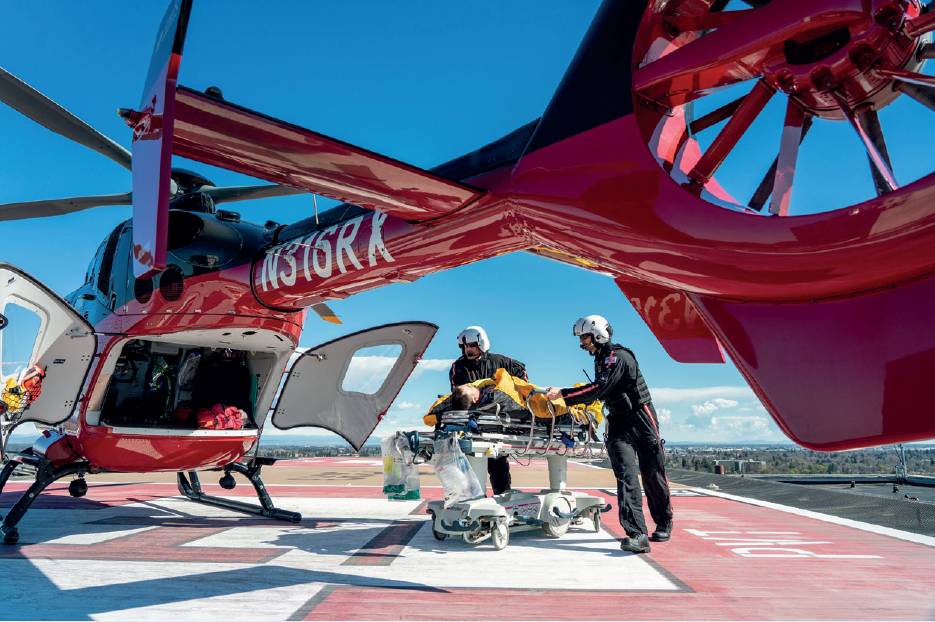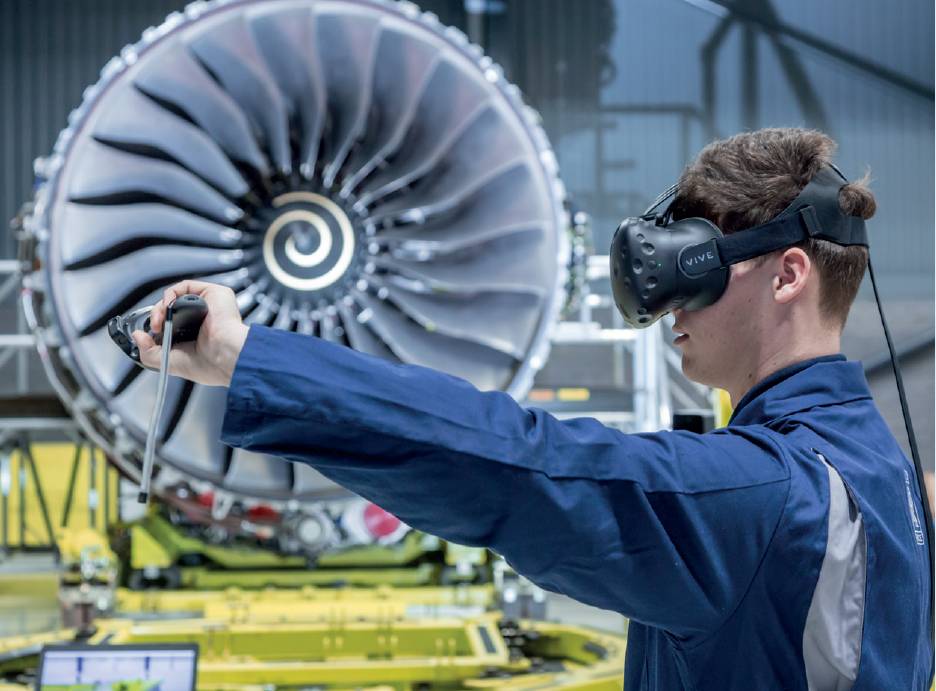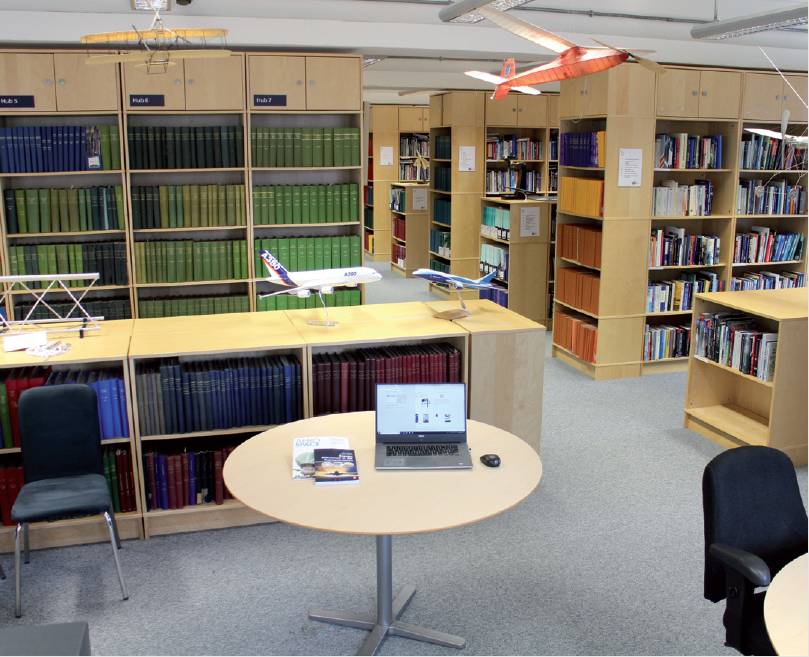Book Reviews
Book Reviews
By C Fishman
Simon & Schuster UK Ltd, 1st Floor, 222 Gray’s Inn Road, London WC1X 8HB, UK. 2019. xiii; 483pp. Illustrated. £25. ISBN 978-1-5011-0629-3.
 Eugene Cernan, Apollo 17 Mission Commander, makes a short checkout of the Lunar Roving Vehicle during the early part of the first Apollo 17 extravehicular activity at the Taurus-Littrow landing site on 11 December 1972. NASA.
Eugene Cernan, Apollo 17 Mission Commander, makes a short checkout of the Lunar Roving Vehicle during the early part of the first Apollo 17 extravehicular activity at the Taurus-Littrow landing site on 11 December 1972. NASA.
A summer flurry of new Apollo books can be reliably expected to appear in every year ending in a 9. This book belongs to the category that places Apollo in a socio-political context – not just in terms of the Cold War but also domestically, perhaps more so than the grandfather of Apollo books We Reach The Moon (Bantam Books. 1969) by John Noble Wilford. The New York Times put this book on sale only three days after the Apollo 11 splashdown; Fishman’s book – which references Wilford in a meticulous bibliography of nearly 100 pages – appears 50 years later but benefits from hindsight and extensive journalistic experience.
Fishman openly states that his book is a mix of journalism and history; his account is more a reporter’s rather than an astronaut’s or engineer’s. Understandably, the book is written from an American perspective, and contextualises Apollo in terms of Mercury, Gemini, the Shuttle and the ISS, and also describes how the USSR’s Sputnik and Vostok programmes spurred an otherwise ‘not that interested’ President Kennedy into urging a Moon landing ‘before this decade is out’.
Many authors, now as then, address the economic aspects, attacking the huge cost of Apollo. Predictably, Fishman notes the Vietnam War cost the US five times more; however, he startlingly points out that the annual cost of the space programme, even at its height, was the same as the amount the US spent yearly on cigarettes and cigars.
Apollo was revolutionary not just for its technology but its management of it. Spaceflight celebrities are necessarily mentioned – Neil Armstrong and Wernher von Braun to name just two – but the book also mentions unsung individuals whose efforts were just as pivotal, if not life-saving. NASA’s Bill Tindall receives his own chapter, entitled ‘The Man Who Saved Apollo’. This is no exaggeration, having brought MIT’s software down to size (it exceeded memory capacity by 40%) and putting deliveries back on schedule – sobering reading for even modern-day project managers. A faulty abort switch nearly doomed Apollo 14 but was fixed at MIT by Don Eyles (‘longhaired, peace protesting with John Lennon wire glasses’). With its hard-wired code, transmitting a software patch to the spacecraft was impossible; instead Eyles formulated and tested a procedure on MIT’s Lunar Module (LM) simulator in just two hours. Alan Shepard and Ed Mitchell safely landed their LM at Fra Mauro. John Houboult also receives much-deserved coverage. Houboult’s answer to the chapter’s titular question (‘How Do You Fly to the Moon?’) was his oft-ridiculed but finally adopted, Lunar Orbital Rendezvous (LOR) mission mode, which required just one, and not two, of the huge Saturn V launchers per landing (and had no need of the monstrous Nova rocket, whose development would have delayed the landing well into the 1970s).
LOR required a LM, built by Grumman Aircraft. Grumman, the author notes, produced 14 Hellcat fighters daily during WW2 but such was the LM’s complexity that it took a decade to build 14 flight-ready LMs. Yet the LM still had spare capacity: towards the close of both the Moon landings and the book comes the frantic development of the electric lunar rover, designed by General Motors to fold into the LM and built by Boeing. Rover development started late – Apollo 11’s landing was just weeks away – but took a mere 17 months, in time for a first drive on Apollo 15.
By focusing on Apollo, the book inevitably leaves out much material. However, a couple of omissions are surprising. While the book unflinchingly describes the US’s farcical first rocket launches, the impact of the Apollo 1 fire and its fatalities are only briefly touched upon.
The book makes a few errors (Ed White, for example, wasn’t one of the original Mercury 7 astronauts; Apollo 7 launched on a Saturn 1B, not a Saturn V) but these are forgivable given the highly readable account the author provides.



